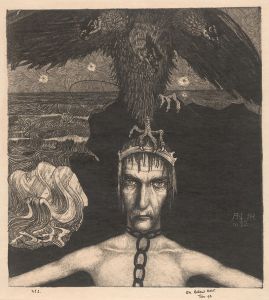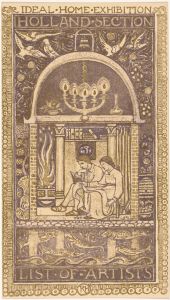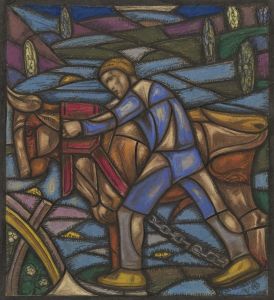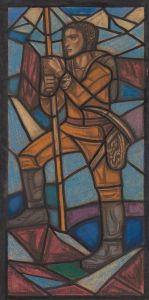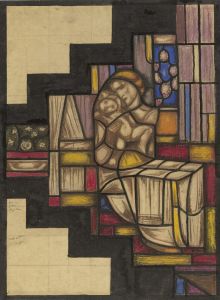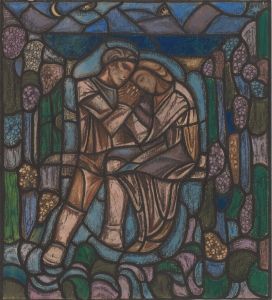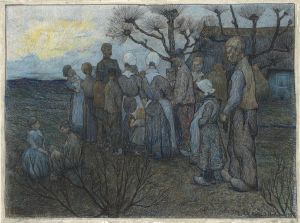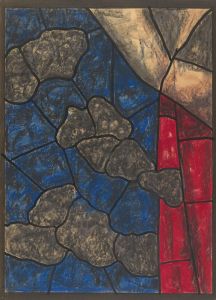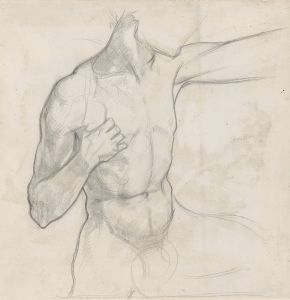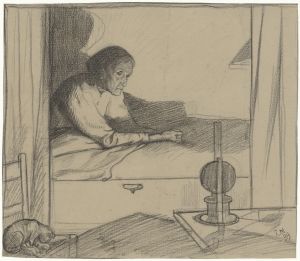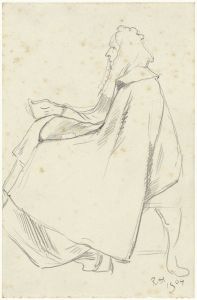
Ontwerp voor raam in het Nederlands Paviljoen op de tentoonstelling Arts Décoratifs te Parijs, 1925
A hand-painted replica of Richard Nicolaüs Roland Holst’s masterpiece Ontwerp voor raam in het Nederlands Paviljoen op de tentoonstelling Arts Décoratifs te Parijs, 1925, meticulously crafted by professional artists to capture the true essence of the original. Each piece is created with museum-quality canvas and rare mineral pigments, carefully painted by experienced artists with delicate brushstrokes and rich, layered colors to perfectly recreate the texture of the original artwork. Unlike machine-printed reproductions, this hand-painted version brings the painting to life, infused with the artist’s emotions and skill in every stroke. Whether for personal collection or home decoration, it instantly elevates the artistic atmosphere of any space.
Richard Nicolaüs Roland Holst was a prominent Dutch artist known for his contributions to the Arts and Crafts movement in the Netherlands. One of his notable works is the "Ontwerp voor raam in het Nederlands Paviljoen op de tentoonstelling Arts Décoratifs te Parijs, 1925," which translates to "Design for a Window in the Dutch Pavilion at the Decorative Arts Exhibition in Paris, 1925." This work was created for the Exposition Internationale des Arts Décoratifs et Industriels Modernes held in Paris in 1925, an event that was instrumental in defining the Art Deco style.
The 1925 Paris Exhibition was a significant international event that showcased the latest trends in decorative arts and design. It was at this exhibition that the term "Art Deco" was popularized, describing a style characterized by rich colors, bold geometric shapes, and lavish ornamentation. The Dutch Pavilion, where Roland Holst's window design was featured, was part of this larger exhibition, highlighting the Netherlands' contributions to modern design and craftsmanship.
Roland Holst's design for the window in the Dutch Pavilion reflects his deep engagement with the principles of the Arts and Crafts movement, which emphasized traditional craftsmanship, the use of simple forms, and the beauty of natural materials. His work often incorporated elements of symbolism and was marked by a strong sense of composition and color. Although specific details about the window design itself are limited, it can be inferred that it likely included these characteristic elements, aligning with the broader themes of the exhibition.
Richard Roland Holst was not only a visual artist but also a writer and a teacher. He played a significant role in the Dutch art scene in the late 19th and early 20th centuries, influencing a generation of artists through his teachings and writings. His involvement in the 1925 Paris Exhibition underscores his status as a key figure in the promotion of Dutch art and design on the international stage.
The Dutch Pavilion at the 1925 exhibition was designed to showcase the nation's achievements in modern design, and Roland Holst's contribution would have been an integral part of this presentation. The pavilion itself was a collaborative effort, featuring works from various Dutch artists and designers, each contributing to the overall theme of innovation and craftsmanship.
While detailed records of the specific design elements of Roland Holst's window are scarce, the significance of his participation in the exhibition is well-documented. It highlights the international recognition of Dutch artists and their influence on the development of modern art and design during this period. Roland Holst's work, including his design for the window, remains an important part of the legacy of the 1925 Paris Exhibition and the broader Art Deco movement.
In summary, Richard Nicolaüs Roland Holst's "Design for a Window in the Dutch Pavilion at the Decorative Arts Exhibition in Paris, 1925" represents a significant moment in the history of Dutch art and its intersection with the international Art Deco movement. His work exemplifies the principles of the Arts and Crafts movement and reflects the innovative spirit of the 1925 Paris Exhibition.





